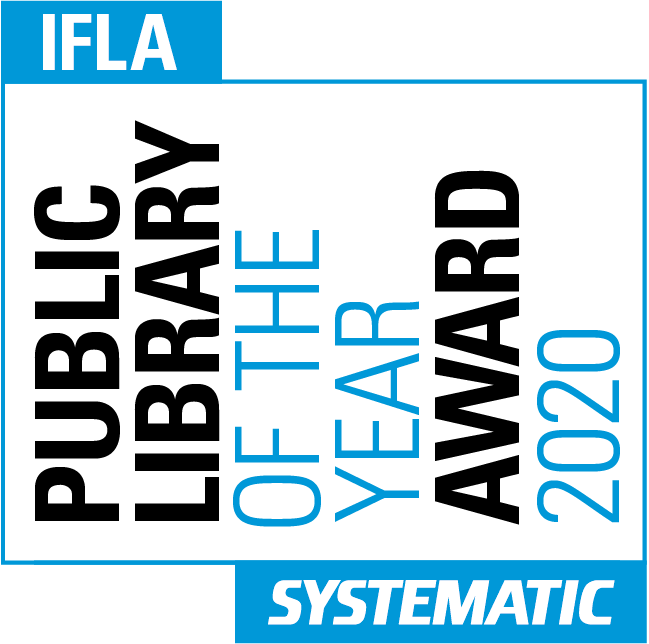Call for IFLA/Systematic Public Library of the Year 2020 is open!
01 February 2020
NOTE: The 2020 award has been cancelled but criteria has been extended.
 The “IFLA/Systematic Public Library of the Year” award celebrates new public libraries.
The “IFLA/Systematic Public Library of the Year” award celebrates new public libraries.
The award is presented to a library anywhere in the world that best combines open, functional architecture with creative IT solutions and also takes into account both digital developments and local culture. To qualify in 2020, the library must be built between January 1st, 2019 and December 31st, 2019 or located in a building not previously used as a library.
The award will be presented at the IFLA WLIC in Dublin August 15th to August 21st, 2020 and is accompanied by a USD 5,000 prize. The Award is administered by IFLA’s Public Libraries, Library Buildings and Equipment and Metropolitan Libraries sections. Systematic is a proud sponsor of this award.
Apply now!
Local government bodies responsible for new public libraries may apply to be considered for this award, in co-operation with relevant advisors. It is not a requirement to be a member of IFLA.
Submit you application open from 1 February to 1 May 2020 [Deadline extended]
Assessment criteria
- Interaction with the surroundings and local culture: Including how the architecture reflects – or gives consideration to – the local culture of the community, how it provides visibility in the urban landscape and interaction with surrounding buildings and open spaces. Does the library serve as a driver of connections or movements in the urban context? Can the library function as a “living room” for the community, with access for all?
- Architectural quality: Including how each space works in terms of functions and logistics. How is the architectural concept implemented and designed on different scales within the building? This is of great importance for how individual spaces within the library affect the people using them.
- Flexibility: Including how rooms are designed and organised, and how surfaces and the combination of spaces are an inspiration for the users’ own activities and support new activities and synergy across various spaces. For example, does the library include makerspace facilities for workshops or a stage? Are these used, and if so, how? Can these spaces be easily modified and used for various functions and activities?
- Sustainability: Including how sustainable thinking has been incorporated into the library, such as by reducing the quantities of resources used, using local materials in the construction process or by finding new ways to use natural resources as an energy source.
- Learning space: Including the way the library offers a diversity of inroads to education, how learning spaces support different learning situations, appeal to different needs, age groups and encourage various learning formats – especially learning as a social phenomenon. How do the learning spaces interact with the rest of the library?
- Digitisation: Including how digital communication and the accessibility of the library content are integrated within the library space, using methods that include mobile technologies. How are design, aesthetics and interaction used as the basis for this digitisation? Has digitisation been used in any innovative and creative ways to create experiences for the library users within the building?
See also: Frequently Asked Questions